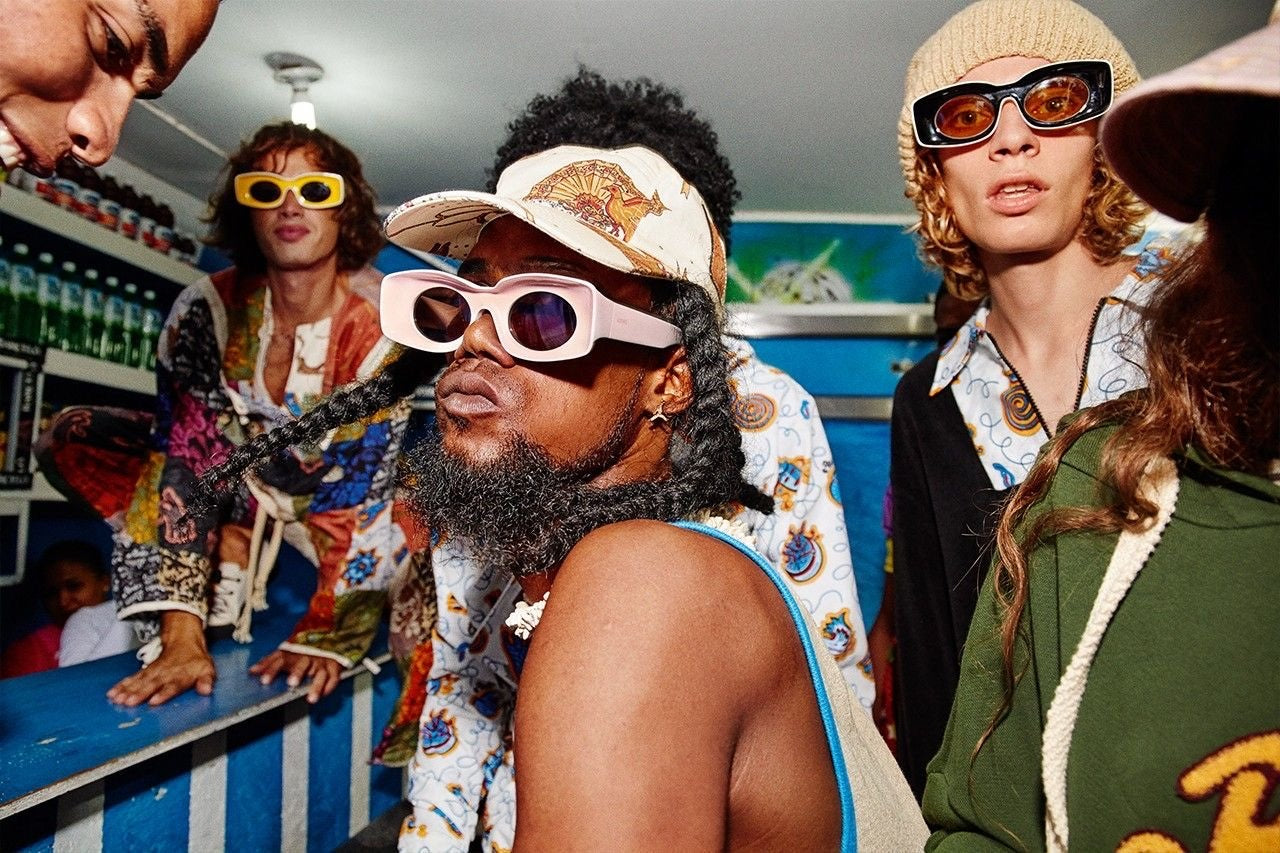خذ وقتك للابتسام®
في Smiley، هدفنا هو نشر الإيجابية من خلال الابتسامات، لجعل العالم مكانًا أكثر سعادة ولطفًا.
على مدى العقود الخمسة الماضية، كانت جميع تعاوناتنا وشراكاتنا وخبراتنا ترقى إلى مستوى هذه الروح الأخلاقية، وبينما نتطلع إلى السنوات الخمسين القادمة وما بعدها، فإننا نبحث باستمرار عن طرق لإظهار للناس كيفية الابتسام للعالم - ونحن نفعل ذلك من خلال الاستمرار في تشجيع الناس على "خذ الوقت الكافي للابتسام" - لأن ما هو أكثر إلهاما وعالمية من الابتسامة؟
حيث بدأ كل شيء
باريس، فرنسا - كان لدى الصحفي الشاب فرانكلين لوفراني فكرة مبتكرة. تخلى لوفراني عن دراسته الجامعية والتحق بأول صحيفة له في التاسعة عشرة من عمره. وفي عام ١٩٧١، أثناء عمله في صحيفة فرانس سوار، سئم من التدفق المستمر للأخبار السلبية، فقرر تصميم حملة تُسلّط الضوء على القصص الإيجابية للقراء. فكرته؟ وجه أصفر مبتسم بجانب جميع الأخبار الإيجابية، وعلى منتجات مرحة لنشر الحملة في كل منزل وفي كل مكان عام.
لقد احتفظت هذه العلامة التجارية البسيطة - دائرة صفراء ونقطتان وابتسامة - بأهميتها على مدار 50 عامًا من الحركات الثقافية، من الحب الحر إلى الحفلات الصاخبة إلى الثورة الرقمية بفضل الجهود الإبداعية والقدرة على التواصل مع الآخرين لفرانكلين وابنه نيكولاس الذي انضم إليه في عام 1997، محاطًا بكل الأشخاص المذهلين الذين يعملون في شركة Smiley وشركائها.
1970s-1980s
الحرب والسلام
أصبح الشعار، الذي لم يكن يحمل علامة "سمايلي" التجارية بعد، منارةً وأحد أبرز رموز ثقافة السلام والمحبة خلال هذا العقد من الاضطرابات الاقتصادية والسياسية والاجتماعية. وقد عززت منتجات "سمايلي" الروح المعنوية التي كانت في أمسّ الحاجة إليها خلال هذه الفترة المضطربة، حيث تبنّاها الفنانون والموسيقيون للتعبير عن رغبتهم في جعل العالم مكانًا أكثر سعادة.
1980s-990s
حركة الشباب والثقافة المضادة
ازداد تأثير سمايلي بالتزامن مع نشأة الثقافات الموسيقية الفرعية، ليصبح رمزًا لحركة الموسيقى الإلكترونية التي استمرت حتى التسعينيات. طُبع هذا الاختزال البصري على كل شيء، من الملصقات والقمصان وأوراق التذاكر والمنشورات وأربطة الأحذية، وقد تبنته ثقافة شعبية جديدة تتطلع إلى المتعة.
عززت Smiley مكانتها المميزة من خلال ظهورها على ملصق للإعلان إصدار ألبوم "Nevermind" لفرقة نيرفانا، مما ألهم فجر حركة الجرونج في التسعينيات.
1990s-200s
اللغة العالمية للابتسامة
وقد احتضن الجيل الرقمي الجديد التأثير الثقافي الدائم لـ Smiley.
سبق نيكولاس لوفراني، المؤسس المشارك لشركة سمايلي، عصره، بابتكار شكل عالمي جديد للتواصل الرقمي بإضافة مجموعة متنوعة من تعابير الوجه إلى سمايلي الأصلي. ألهمت هذه الرموز التعبيرية ثورة في عالم التواصل البصري، وهي تُرسل الآن حول العالم يوميًا بوتيرة متسارعة.
2000S-2010S
المتعاون الأصلي
تواصل سمايلي، كواحدة من أبرز العلامات التجارية العالمية في مجال ترخيص التعاون، تأثيرها على الثقافة المعاصرة، حيث تعاونت في أنشطة بارزة شملت الموضة والفن والجمال والأدوات المنزلية والمأكولات والمشروبات. ومن بين الأعمال الفنية الشهيرة "شرطي بانكسي" (2003) و"حاصد الأرواح" (2005). ولأول مرة، استغلت سمايلي تراثنا العريق بانطلاقها في عالم الموضة والتصميم. ومن أبرز الشراكات التي أبرمتها علامات تجارية رائدة مثل Supreme وArmani وLoewe وZara وMoschino وRaf Simons وH&M وEastpak وDsquared2 وAdidas... على سبيل المثال لا الحصر.
2020s
50 عامًا من التفاؤل المتحدي
في عام 2022، احتفلت شركة Smiley بعيد ميلادها الخمسين بإطلاق حملة عالمية لإحياء شعارنا الأصلي: "خذ الوقت الكافي للابتسام".
شهدت هذه المبادرة شراكتنا مع أكثر من 60 علامة تجارية وتاجر تجزئة من جميع أنحاء العالم في معارض، وموسيقى مخصصة، ومجموعات منتجات، وتجارب غامرة. وفي العام نفسه، أعلنا عن إطلاق
Future Positive ، وهي حملة هي الأولى من نوعها في الصناعة تعمل مع علامات تجارية عالمية أخرى لمعالجة الظلم الاجتماعي والمناخي في جميع أنحاء العالم من خلال شفافية المنتج والاستدامة.


